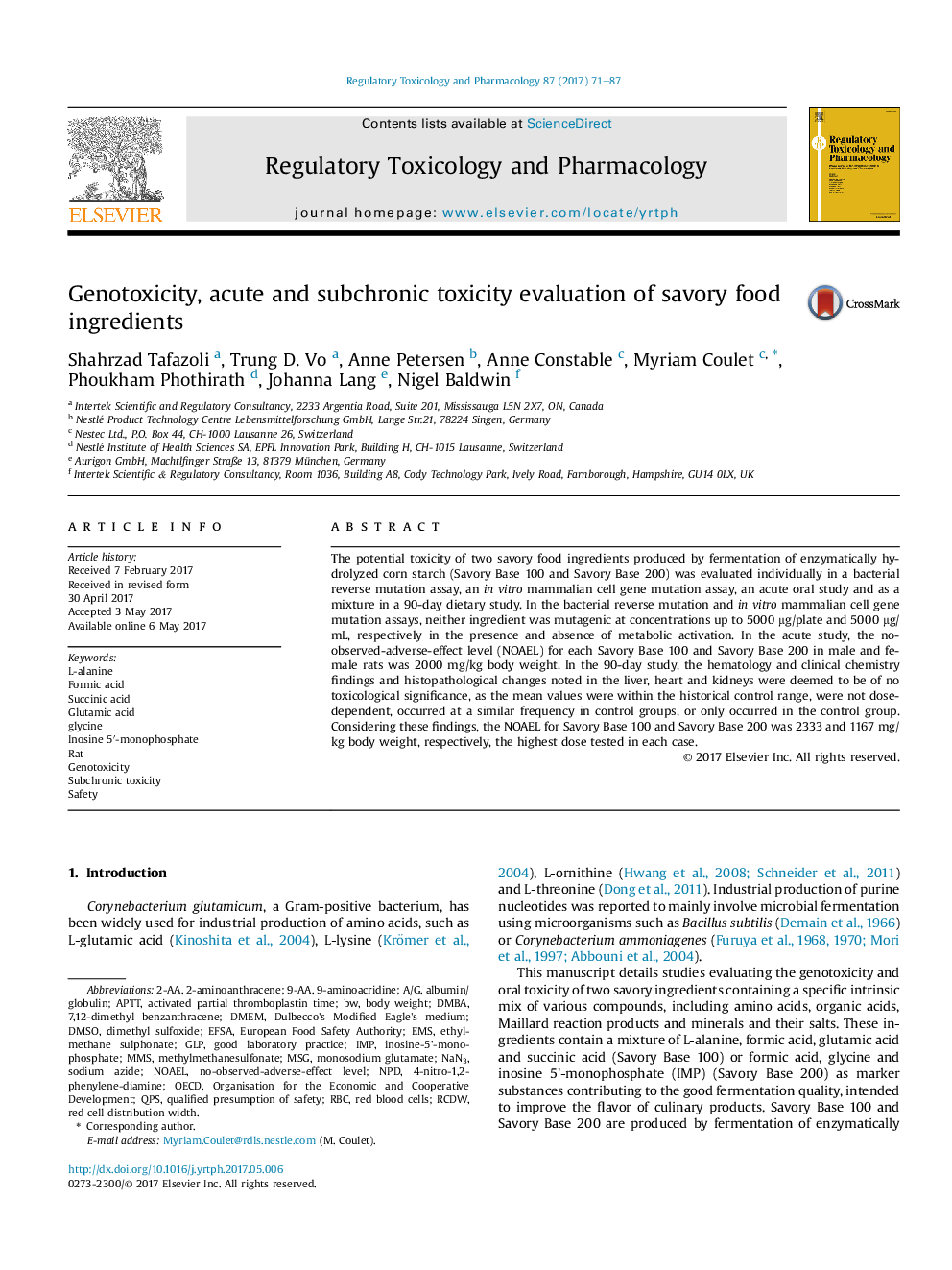| Article ID | Journal | Published Year | Pages | File Type |
|---|---|---|---|---|
| 5561325 | Regulatory Toxicology and Pharmacology | 2017 | 17 Pages |
â¢The savory ingredients tested were not mutagenic in the Ames and in vitro mammalian cell gene mutation assays.â¢In the acute study, NOAEL for each ingredient was 2000 mg/kg bw in both male and female rats.â¢In a 90-day study, NOAEL for Savory Base 100 and Savory Base 200 was 2333 and 1167 mg/kg bw, respectively.
The potential toxicity of two savory food ingredients produced by fermentation of enzymatically hydrolyzed corn starch (Savory Base 100 and Savory Base 200) was evaluated individually in a bacterial reverse mutation assay, an in vitro mammalian cell gene mutation assay, an acute oral study and as a mixture in a 90-day dietary study. In the bacterial reverse mutation and in vitro mammalian cell gene mutation assays, neither ingredient was mutagenic at concentrations up to 5000 μg/plate and 5000 μg/mL, respectively in the presence and absence of metabolic activation. In the acute study, the no-observed-adverse-effect level (NOAEL) for each Savory Base 100 and Savory Base 200 in male and female rats was 2000 mg/kg body weight. In the 90-day study, the hematology and clinical chemistry findings and histopathological changes noted in the liver, heart and kidneys were deemed to be of no toxicological significance, as the mean values were within the historical control range, were not dose-dependent, occurred at a similar frequency in control groups, or only occurred in the control group. Considering these findings, the NOAEL for Savory Base 100 and Savory Base 200 was 2333 and 1167 mg/kg body weight, respectively, the highest dose tested in each case.
